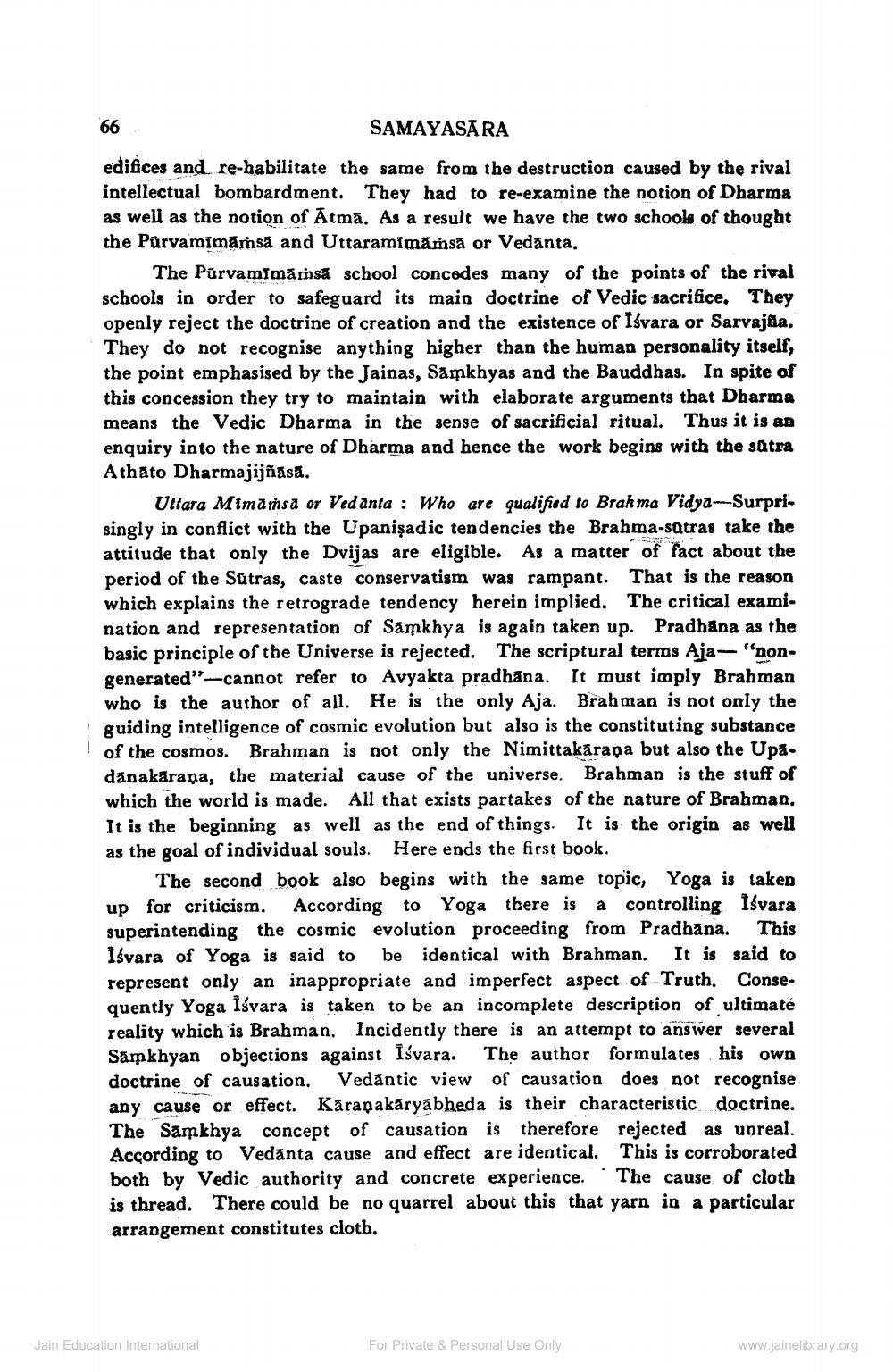________________
66
SAMAYASARA
edifices and re-habilitate the same from the destruction caused by the rival intellectual bombardment. They had to re-examine the notion of Dharma as well as the notion of Atmā. As a result we have the two schools of thought the Purvamsmāmsā and Uttaramimărsa or Vedanta.
The Purvamimāmsā school concodes many of the points of the rival schools in order to safeguard its main doctrine of Vedic sacrifice. They openly reject the doctrine of creation and the existence of Isvara or Sarvajta. They do not recognise anything higher than the human personality itself, the point emphasised by the Jainas, Samkhyas and the Bauddhas. In spite of this concession they try to maintain with elaborate arguments that Dharma means the Vedic Dharma in the sense of sacrificial ritual. Thus it is an enquiry into the nature of Dharma and hence the work begins with the satra Athāto Dharmajijñāsā.
Uttara Mimaṁsa or Vedanta : Who are qualified to Brahma Vidya--Surprisingly in conflict with the Upanişadic tendencies the Brahma-satras take the attitude that only the Dvijas are eligible. As a matter of fact about the period of the Satras, caste conservatism was rampant. That is the reason which explains the retrograde tendency herein implied. The critical examination and representation of Samkhya is again taken up. Pradhana as the basic principle of the Universe is rejected. The scriptural terms Aja- "nongenerated"-cannot refer to Avyakta pradhana. It must imply Brahman who is the author of all. He is the only Aja. Brahman is not only the guiding intelligence of cosmic evolution but also is the constituting substance of the cosmos. Brahman is not only the Nimittakarana but also the Upadanakāraṇa, the material cause of the universe. Brahman is the stuff of which the world is made. All that exists partakes of the nature of Brahman. It is the beginning as well as the end of things. It is the origin as well as the goal of individual souls. Here ends the first book.
The second book also begins with the same topic, Yoga is taken up for criticism. According to Yoga there is a controlling Isvara superintending the cosmic evolution proceeding from Pradhana. This Isvara of Yoga is said to be identical with Brahman. It is said to represent only an inappropriate and imperfect aspect of Truth. Consequently Yoga Išvara is taken to be an incomplete description of ultimate reality which is Brahman, Incidently there is an attempt to answer several Samkhyan objections against Isvara. The author formulates his own doctrine of causation. Vedāntic view of causation does not recognise any cause or effect. Karapakāryābheda is their characteristic doctrine. The Samkhya concept of causation is therefore rejected as unreal. According to Vedanta cause and effect are identical. This is corroborated both by Vedic authority and concrete experience. The cause of cloth is thread. There could be no quarrel about this that yarn in a particular arrangement constitutes cloth.
Jain Education International
For Private & Personal Use Only
www.jainelibrary.org




